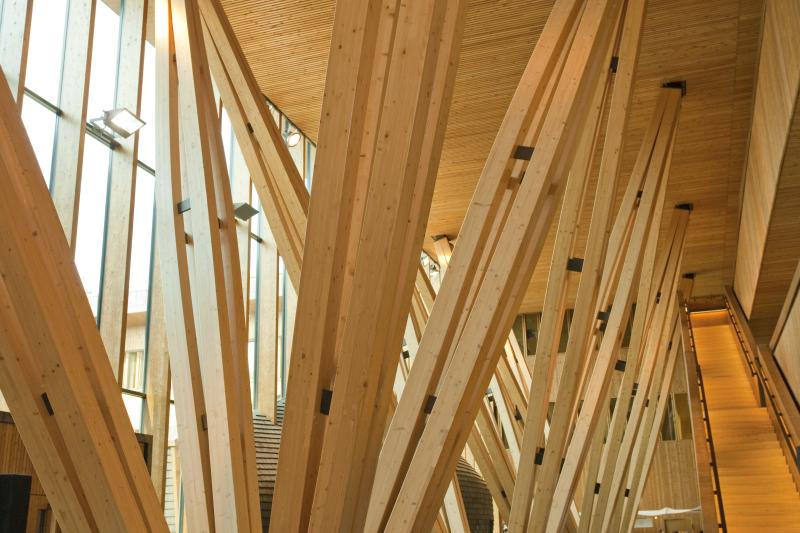Wood sets the pace, but cannot win, in the race to a green building construction
Making and using materials for building construction is responsible for environmental impacts that are increasing due to population and wealth growth. Buildings consume 40% of energy and produce 30% of emissions in Finland. Construction is a key contributor to the fact that mankind is getting short of such seemingly unlimited resources such as sand.
The most effective way to eliminate the impact of construction would be not to build at all, and in many cases, it would be better to renovate existing structures rather than to demolish and rebuild. However, neither approach will completely avoid the need for the construction of new buildings.
If new construction cannot be avoided, the associated environmental impacts should at least be minimized. Wood is generally understood to cause less environmental impact than other materials. This is largely because the primary energy supply for wood is solar (i.e., photosynthesis in the forest); whereas fossil fuels are the primary energy source for concrete, steel, and plastic.
However, wood has limited global potential in construction due to limitations on the scale of production (Table 1). Global concrete production, as an example, is volumetrically at least 10 times larger than the production of wood products for construction applications. Even with intensive forest management, it is not realistic to envision volumes of wood that could fully, or even mostly, replace concrete.
| Material | Approximate production volume per year (million m3) |
| Concrete | 14,000 ( 5,600 for residential construction) |
| Wood | 500 |
| Plastics | 390 |
| Steel | 240 (120 for building construction) |
While wood is globally no real threat to the continued use of other materials in terms of volumes, it does offer the exemplar for the greening of the construction sector. Sustainably sourced wood is a versatile, low-embodied fossil carbon, reusable, recyclable, renewable, and biodegradable material.
Although wood’s role in substituting fossil-intensive materials has been subject to active scientific work recently, its pacesetting role in greening the construction sector’s huge environmental load is poorly understood. This may be due to wood’s relatively small share among global construction material use, or the focus of research on the environmental impacts of forest harvest. For the forest products industries, the business case is a paradox: inspiring other businesses into improvements will decrease the relative advantage of wood, given that the wood sector’s own opportunities for further greening are modest. However, we all win when the general level of environmental performance in the construction sector is improved.
’Greening’ efforts should be focused on sectors with the potential for the greatest impacts. Due to scale of production and the magnitude of emissions, even modest improvements in, for example, concrete production and use are likely to have a greater environmental benefit than even radical advances in the wood sector.
One material cannot defeat others by eliminating competitors – it is obvious that all materials will be needed in the future. There is, however, a great and immediate chance to improve the cumulative impact of the construction sector by using the excellent precedent of wood products to improve the other materials: for example, by increased use of renewable energy in manufacture and by increasing the potential for reuse and recyclability. Wood cannot meet all of our needs but it can ‘set the pace’ in our race to a more sustainable future.
The blog is written together with Adam M. Taylor who is a professor at the University of Tennessee in the United States. As a Fulbright Finland grantee, he is living in Joensuu until July, collaborating in research with Luke personnel on the climate impacts of wood products.


